Relative risk vs Odds ratio Similarities They will always agree on the direction of comparison In our example above, both will agree that wine consumers have less heart disease than nonconsumers;This implausible scenario is shown in Table 5, where collapsed counts for low (or high) risk subjects only produce a 2 × 2 table with an odds ratios of 400Odds ratios (OR) are commonly reported in the medical literature as the measure of association between exposure and outcome However, it is relative risk that people more intuitively understand as a measure of association Relative risk can be directly determined in a cohort study by calculating a risk ratio (RR)

Retrospective Cohort Study Wikipedia
What is the difference between odds ratio and relative risk
What is the difference between odds ratio and relative risk- · The odds ratio will be greater than the relative risk if the relative risk is greater than one and less than the relative risk otherwise In the example above, if the adjusted odds ratio were interpreted as a relative risk, it would suggest that the risk of antibiotic associated diarrhoea is reduced by 75% for the intervention relative to the placebo group However, this would · Here's the key Relative Risk looks to the future for the effect of a particular cause hence it is used in prospective studies say a cohort study Lets compare the above with Odds Ratio The Odds Ratio can be addressed by asking te following question How many times more likely is a diseased group to have been exposed to a risk factor as compared to a nondiseased



Relative Risk Versus Odds Ratio Usmle Biostatistics 4 Youtube
4 comments share save hide report 84% · Odds ratio vs risk ratio You know the difference between risk and odds A risk is the proportion of subjects with an event in a total group of susceptible subjects Thus, we can calculate the risk of having a heart attack among smokers (infarcted smokers divided by the total number of smokers) and among nonsmokers (the same, but with non– 3 6 Zou G A modified Poisson regression approach to prospective studies with binary data Am J Epidemiol 04;
When used for cohort studies and randomized clinical trials, the odds ratio is often incorrectly interpreted as the risk ratio;When RR > 1, OR > 1; · The odds ratio (OR) or the ratio of odds of exposure is thus given by a/cb/d (or ad/bc) The odds ratio is generally a good estimate of the relative risk The terms odds ratio and relative risk are in fact interchangeable when used in casecontrol studies Population and hospitalbased casecontrols studies
As I thought you used relative risk for cohort and odds ratio for casecontrol studies? · 2) Cohort studies will have information about persontime at risk, and so the desired outcomes are often incidence rates, population attributable risk, or risk ratios The odds ratio estimate for rare outcomes will approximately estimate the risk ratio in this design, but it makes more sense to compute the risk ratio directly · If the relative risk is 1, the tutoring made no difference at all If it's above 1, then the tutored group actually had a higher risk of failing than the controls Odds Ratio The odds ratio is the ratio of the odds of an event in the Treatment group to the odds of an event in the control group The term 'Odds' is commonplace, but not
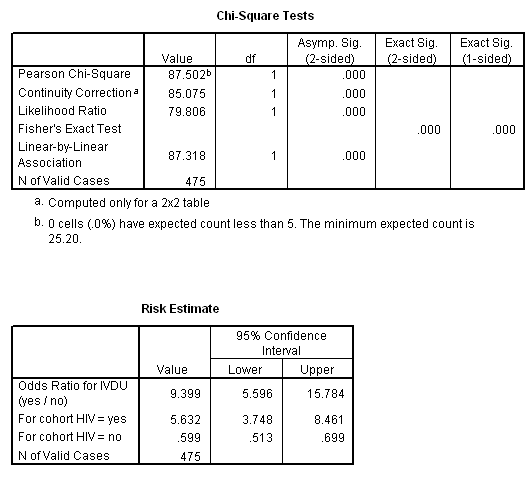


Marg Innovera



Lesson 9 Cohort Study Design Sample Size And Power Considerations For Epidemiologic Studies
· Odds ratio (OR) and risk ratio (RR) are two commonly used measures of association reported in research studies In crosssectional studies, the odds ratio is also referred to as the prevalence odds ratio (POR) when prevalent cases are included, and, instead of the RR, the prevalence ratio (PR) is calculated However, it should be noted that, although, mathematical · In case–control studies, the odds ratio is the appropriate effect estimate, and the odds ratio can sometimes be interpreted as a risk ratio or rate ratio depending on the sampling method 1 – 4 However, in cohort studies and RCTs, odds ratios are often interpreted as risk ratiosRR and OR are commonly used measures of association in observational studies In this video I will discuss how to interpret them and how to apply them to pat



Reporting The Results Sage Research Methods
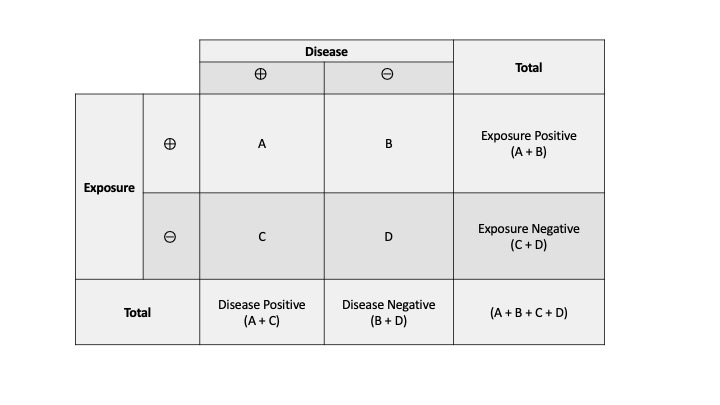


Measures Of Association Stats Medbullets Step 1
· The risk ratio (RR), also called the relative risk, is the ratio of the probability of cancer in smokers to the probability of cancer in nonsmokers RR = (a/(ab))/(c/(cd)) = (a(cd))/(c(ab)) Given that you know a, b, c, and d, you can compute either of these metrics Yet odds ratio is strongly preferred as the "right" metric to report in almost all scenarios That · In medical literature, the relative risk of an outcome is often described as a risk ratio (the probability of an event occurring in an exposed group divided by the probability in a nonexposed group) Certain types of trial designs, however, report risk as an odds ratio This format is commonly expressed in cohort studies using logistic regressionRisk ratios When risks are computed in a study, the risk ratio is the measure that compares the Risk exposed to the Risk unexposed The risk ratio is defined as the risk in the exposed cohort (the index group) divided by the risk in the unexposed cohort (the reference group) A risk ratio may vary from zero to infinity Risk Ratio = a / (ab



Relative Risk And Absolute Risk Definition And Examples Statistics How To



A Most Odd Ratio Interpreting And Describing Odds Ratios Abstract Europe Pmc
When RR = 1, OR = 1; · Other O does not have an R (cOhort), which means the other group does not have the risk factor Compare the two to see who gets the disease How to remember that case control studies measure odds ratio and cohort studies measure relative risk You take surgical "cases" to the "OR" (Operating room) Case control study Odds Ratio cohoRRRRRRt98 · Even with initial risks as high as 50% and very large reductions in this risk (odds ratios of about 01), the odds ratio is only 50% smaller than the relative risk (01 for the odds ratio compared with a true value for the relative risk of 02)



Cureus What S The Risk Differentiating Risk Ratios Odds Ratios And Hazard Ratios



How To Interpret And Use A Relative Risk And An Odds Ratio Youtube
· Examples of measures of association include risk ratio (relative risk), rate ratio, odds ratio, and proportionate mortality ratio Risk ratio Definition of risk ratio A risk ratio (RR), also called relative risk, compares the risk of a health event (disease, injury, risk factor, or death) among one group with the risk among another group It does so by dividing the risk (incidenceUnderstanding Relative Risk, Odds Ratio, and Related Terms As Simple as It Can Get Chittaranjan Andrade, MD ABSTRACT Risk, and related measures of effect size (for categorical outcomes) such as relative risks and odds ratios, are frequently presented in research articles Not all readers know how these statistics are derived and interpreted, nor are all readers aware ofAlso I have difficulty understanding different study designs and ends up misinterpreting them Is there an easier way of understanding the difference between cohort studies, case control studys, retrospective cohort studies and crosssectional studies



Moving Beyond Odds Ratios Estimating And Presenting Absolute



Relative Risk Http Www Slideshare Net Terryshaneyfelt7 What Does An Odds Ratio Or Relative Risk Mean Study Skills Research Methods Study Tips
Odds ratio vs relative risk? · Given that this is a cohort study, the relative risk (RR) should have been calculated instead of the odds ratio Odds ratios frequently generate larger differences between exposed and nonexposed groups (especially when dealing with nonrare events), therefore overestimating the observed effect (4) However, considering the longer followup time of the APSRSA group in · Odds ratio vs relative risk Odds ratios and relative risks are interpreted in much the same way and if and are much less than and then the odds ratio will be almost the same as the relative risk In some sense the relative risk is a more intuitive measure of effect size Note that the choice is only for prospective studies were the distinction becomes important in cases of



Definition And Calculation Of Odds Ratio Relative Risk Stomp On Step1



Believability Of Relative Risks And Odds Ratios In Abstracts Cross Sectional Study The Bmj
When the "cases" studied are representative of all people with the disease in the population from which the cases were drawn,Odds ratio can be calculated in a cohort study and in a casecontrol study − The exposure odds ratio is equal to the disease odds ratio Relative risk can only be calculated in a cohort study 33 When Is Odds Ratio a Good Estimate of Relative Risk?The relative merits of risk ratios and odds ratios Arch Pediatr Adolesc Med 09;



When Can Odds Ratios Mislead The Bmj



Learning And Applying Biostatistics How The Guinness Brewery
ERRATA At about the 300 mark the slide says "10,00" when it is really supposed to say "10,000" I added a pop up box to fix it Thanks to Mehdi Hedjazi forDifferences Relative risk and odds ratioThe odds ratio then provides an overestimation of the risk ratio, especially when the outcome is frequent The use of logistic regression to adjust for confounding is one of the reasons that odds ratios are presented


Content



Using R For Biomedical Statistics Biomedical Statistics 0 2 Documentation
Both the relative risk and odds ratio are relevant in retrospective cohort studies, but only the odds ratio can be used in casecontrol studies Although most casecontrol studies are retrospective, they can also be prospective when the researcher still enrolls participants based on the occurrence of a disease as new cases occurWhen RR < 1, OR < 1;98 · It usually means the multiple of risk of the outcome in one group compared with another group and is expressed as the risk ratio in cohort studies and clinical trials When the risk ratio cannot be obtained directly (such as in a casecontrol study), the odds ratio is calculated and often interpreted as if it were the risk ratio Subsequently, the term relative risk commonly



Frontiers Odds Ratio Or Prevalence Ratio An Overview Of Reported Statistical Methods And Appropriateness Of Interpretations In Cross Sectional Studies With Dichotomous Outcomes In Veterinary Medicine Veterinary Science



Lecture 08 Strategies For Data Analysis Cohort And Case Control Studies Ppt Relative Risk Cohort Study
The smaller the risk of the disease is in both groups, the closer the OR is to the RR ; · Is Odds ratio the same as relative risk ratio?9222 Measures of relative effect the risk ratio and odds ratio Measures of relative effect express the outcome in one group relative to that in the other The risk ratio (or relative risk) is the ratio of the risk of an event in the two groups, whereas the odds ratio is the ratio of the odds of an event (see Box 92a)For both measures a value of 1 indicates that the estimated effects



Relative Risk Odds Ratios Youtube


Absolute Risk Vs Relative Risk Vs Odds Ratio Pp Made Easy In Population Perspective Made Easy On Vimeo
The relative risk (or risk ratio) is an intuitive way to compare the risks for the two groups The interactive feature below allows you to simultaneously compute both the risk ratio and the odds ratio in a hypothetical cohort study In general, the odds ratio will be close in value to the risk ratio when the outcome of interest is rare, but the odds ratio will tend to become moreConverting Odds Ratio to Relative Risk in Cohort Studies with Partial Data Information Zhu Wang Connecticut Children's Medical Center Abstract In medical and epidemiological studies, the odds ratio is a commonly applied measure to approximate the relative risk or risk ratio in cohort studies It is well known tha such an approximation is poor and can generate misleadingOdds ratios are used to compare the relative odds of the occurrence of the outcome of interest (eg disease or disorder), given exposure to the variable of interest (eg health characteristic, aspect of medical history) The odds ratio can also be used to determine whether a particular exposure is a risk factor for a particular outcome, and to compare the magnitude of various risk



Measures Of Effect Relative Risks Odds Ratios Risk Difference And Number Needed To Treat Kidney International



Relative Risk Wikipedia
· Odds ratio in cohort study Outcome YES Outcome No Exposed a b unexposed c dOdd of outcome among exposed=a/bOdd of outcome among unexposed=c/d a/bOdd ratio= c/d =ad/bc 5 Odds ratio can be calculated in a cohort study and in a casecontrol study The exposure odds ratio is equal to the disease odds ratio Relative risk can only be calculated in a cohort study Odds ratioIn retrospective studies the odds ratio provides an estimate of relative risk You should take special care to avoid sources of exact confidence interval for odds ratio, odds ratio metaanalysis and conditional logistic regression Cohort studies Cohort studies are usually but not exclusively prospective, the opposite is true for casecontrol studies The following notes relate cohortOdds ratios, relative risk, and β0 from the logit model are presented Keywords st0041, cc, cci, cs, csi, logistic, logit, relative risk, case–control study, odds ratio, cohort study 1 Background Popular methods used to analyze binary response data include the probit model, discriminant analysis, and logistic regression Probit regression is based on the probability integral



What Is The Difference Between The Risk Ratio Rr And The Odds Ratio Or Quora



Retrospective Cohort Study Wikipedia
The Odds Ratio The odds of disease in the exposed group are 7/10, and the odds of disease in the nonexposed group are 6/56 If I compute the odds ratio, I get (7/10) / (5/56) = 656, very close to the risk ratio that I computed from data for the entire population We will consider odds ratios and casecontrol studies in much greater depth inOdds ratio = odds of exposure (cases) = ad odds of exposure (controls) bc An odds ratio of Cohort studies The relative risk is the measure of association for a cohort study It tells us how much more likely (or less likely) it is for people exposed to a factor to develop a disease compared to people not exposed to the factor The relative risk is the ratio of the attack rates of a diseaseThe quote surely just means to say that the odds ratio is a relative risk measure It is only appropriate, therefore, to use RR for prospective cohort studies Odds compare events with nonevents If a horse wins 2 out of every 5 races, its odds of winning are 2 to 3 (expressed as 23) An odds ratio is a ratio of ratios It compares the presence to absence of an exposure given that



Questionable Utility Of The Relative Risk In Clinical Research A Call For Change To Practice Journal Of Clinical Epidemiology
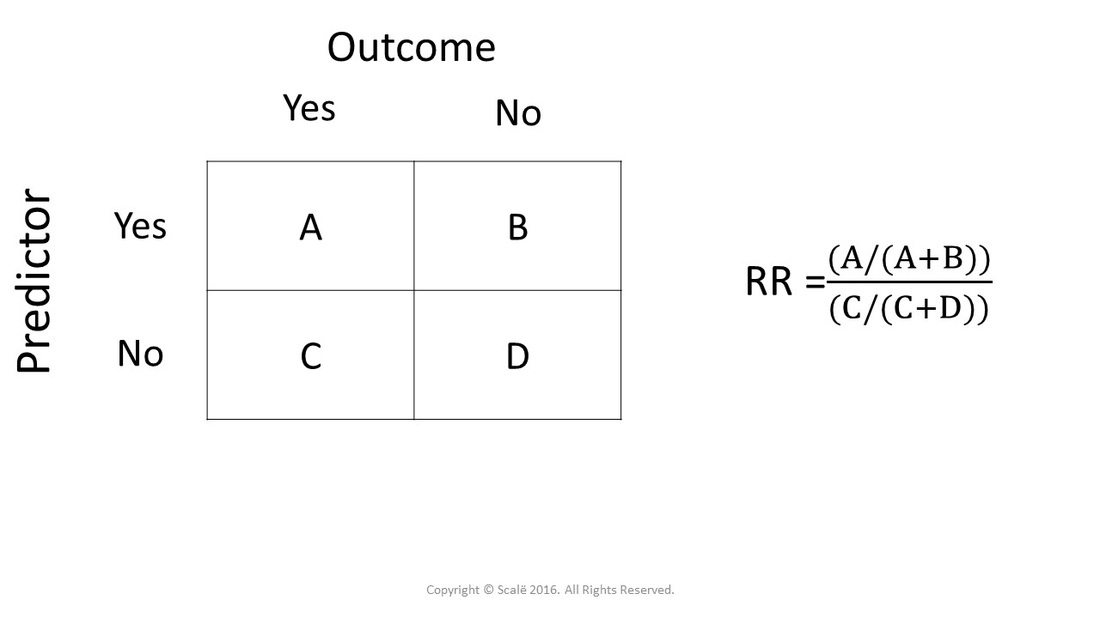


Calculate Relative Risk With 95 Confidence Intervals
In epidemiological terms, the odds ratio is used as a point estimate of the relative risk in retrospective studies Odds ratio is the key statistic for most casecontrol studies In prospective studies, Attributable riskor risk difference is used to quantify risk in the exposed group that is attributable to the exposure–45 5 McNutt L, Wu C, Xue X, Hafner JP Estimating the relative risk in cohort studies and clinical trials of common outcomes Am J Epidemiol 03;/04/ · We illustrated both relative risks and odds ratios using bar charts, then looked at the types of study for which each statistic is suited We demonstrated calculation of relative risks and odds ratios through analysis of tabled data from a recent published longitudinal study, using a 2 × 2 table and R, the open‐source statistical programming language Simple rules for when and how


Odds Ratios Need To Be Graphed On Log Scales Andrew Wheeler



Event Based Measures Of Effect Size Asha Journals Academy
· The odds ratio will estimate the average change in odds (the average odds ratio) among exposed individuals only when all individual odds ratios are equal and all individual outcome risks without exposure are equal 1;The relative risk and the odds ratio are measures of association between exposure status and disease outcome in a population In our cohort study, 80 participants happen to be steroid users, while 240 participants are nonsteroid users The 2×2 table with the exposure status and disease status can be seen below Example 1 Amongst the steroid users, 5 out of 80 people suffered a · Odds ratios (OR) significantly overestimate associations between risk factors and common outcomes The estimation of relative risks (RR) or prevalence ratios (PR) has represented a statistical challenge in multivariate analysis and, furthermore, some researchers do not have access to the available methods Objective To propose and evaluate a new method for
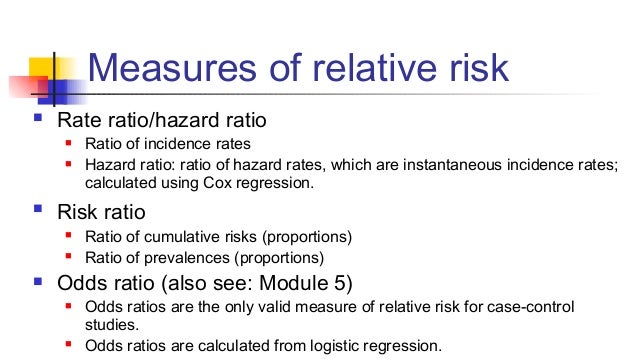


Math3010 Week 6



Analytical Studies Note Cohort Study Gives Incidence Relative Risk A R P A R Natural History Of Disease Cohort Study Case Control Study Study
Academic Question Hi, Been reading through a research paper that used a prospective cohort study, but in the results table for measures of association, the odds ratio was used instead of relative risk Is this study valid?Relative Risk (RR) is a ratio of probabilities or put another way it is one probability divided by another Odds Ratio (OR) is a ratio or proportion of odds I just remember that odds ratio is a ratio of odds and probability isn't a ratio of odds (AKA it is the other option) Relative Risk = Probability / Probability
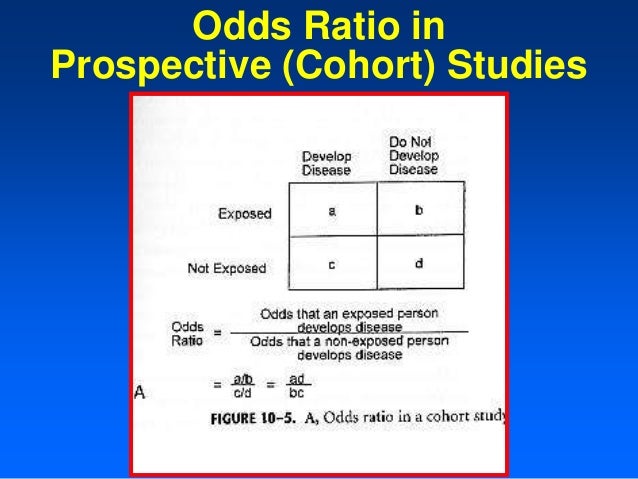


Relative And Atribute Risk



Risks Of And Risk Factors For Covid 19 Disease In People With Diabetes A Cohort Study Of The Total Population Of Scotland The Lancet Diabetes Endocrinology



Main Points To Be Covered Measures Of Association In Case Control Studies Prevalent Controls Design Odds Ratio Vs Relative Risk And The Rare Disease Ppt Download


Absolute Risk Vs Relative Risk Vs Odds Ratio Pp Made Easy In Population Perspective Made Easy On Vimeo



Relative Risk Versus Odds Ratio Usmle Biostatistics 4 Youtube
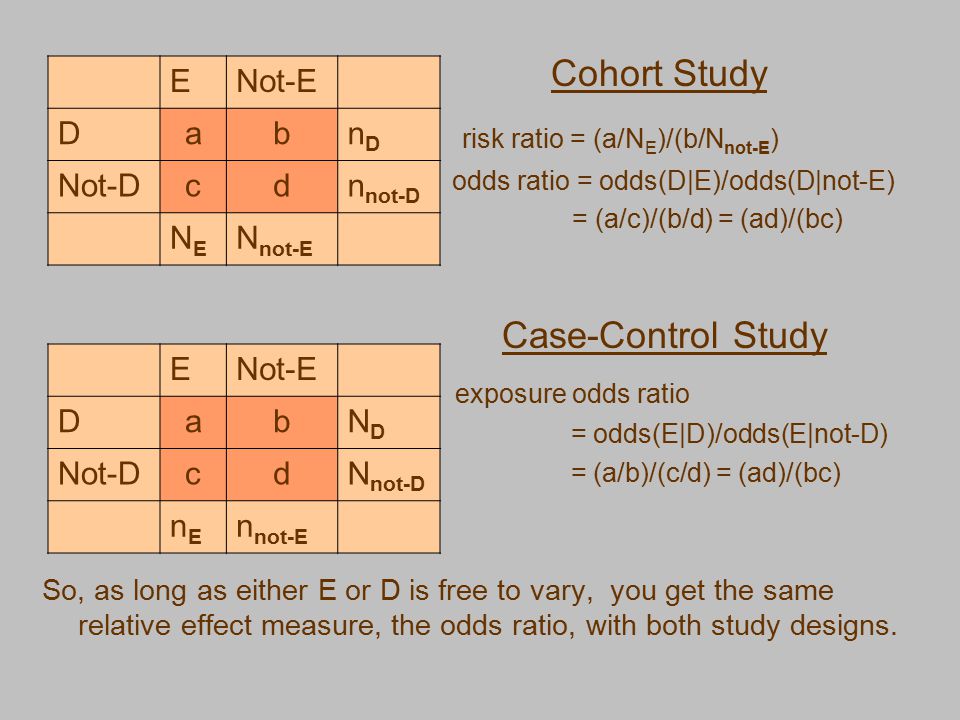


Case Control Studies Statistical Analysis Ppt Video Online Download



Cohort And Case Con Revised



Chapter 6 Choosing Effect Measures And Computing Estimates Of Effect Cochrane Training



Cureus What S The Risk Differentiating Risk Ratios Odds Ratios And Hazard Ratios



Calculation Of Relative Risks Rr And Odd Ratios Or Download Table



Ppt Measures Of Association Powerpoint Presentation Free Download Id



Using Odds Ratio In Case Control Studies Youtube



Relative Risk Wikipedia


What Is The Difference Between The Risk Ratio Rr And The Odds Ratio Or Quora


Definition And Calculation Of Odds Ratio Relative Risk Stomp On Step1



Introduction To 2 X 2 Tables Epidemiologic Study Design And Measures Of Association Foundations Of Epidemiology
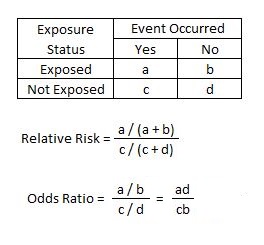


Relative Risk Article
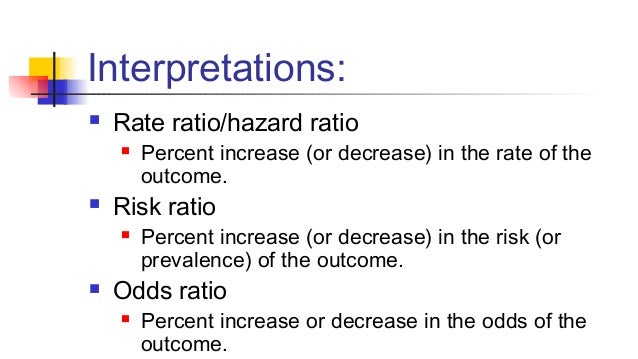


Math3010 Week 6



Definition And Calculation Of Odds Ratio Relative Risk Stomp On Step1


Icare An R Package To Build Validate And Apply Absolute Risk Models



Questionable Utility Of The Relative Risk In Clinical Research A Call For Change To Practice Journal Of Clinical Epidemiology



Definition And Calculation Of Odds Ratio Relative Risk Stomp On Step1



3 5 Bias Confounding And Effect Modification Stat 507
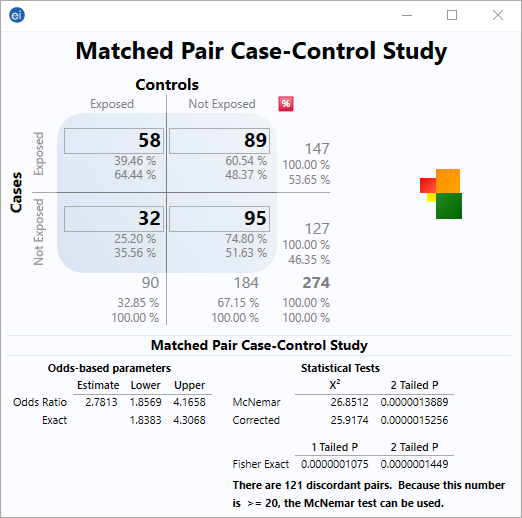


Matched Pair Case Control Statcalc User Guide Support Epi Info Cdc


Research Statistics Basics Contents 1 Basic Concepts 2 References Basic Concepts Null Hypothesis The Hypothesis That The Independent Variable Has No Effect On The Dependent Variable For Example Steroids Do Not Improve Outcomes In Ards Would Be



Relative Risk Or Odds Ratio For Cardiovascular Disease Incidence Download Scientific Diagram
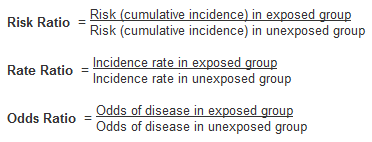


Numerators Denominators And Populations At Risk Health Knowledge
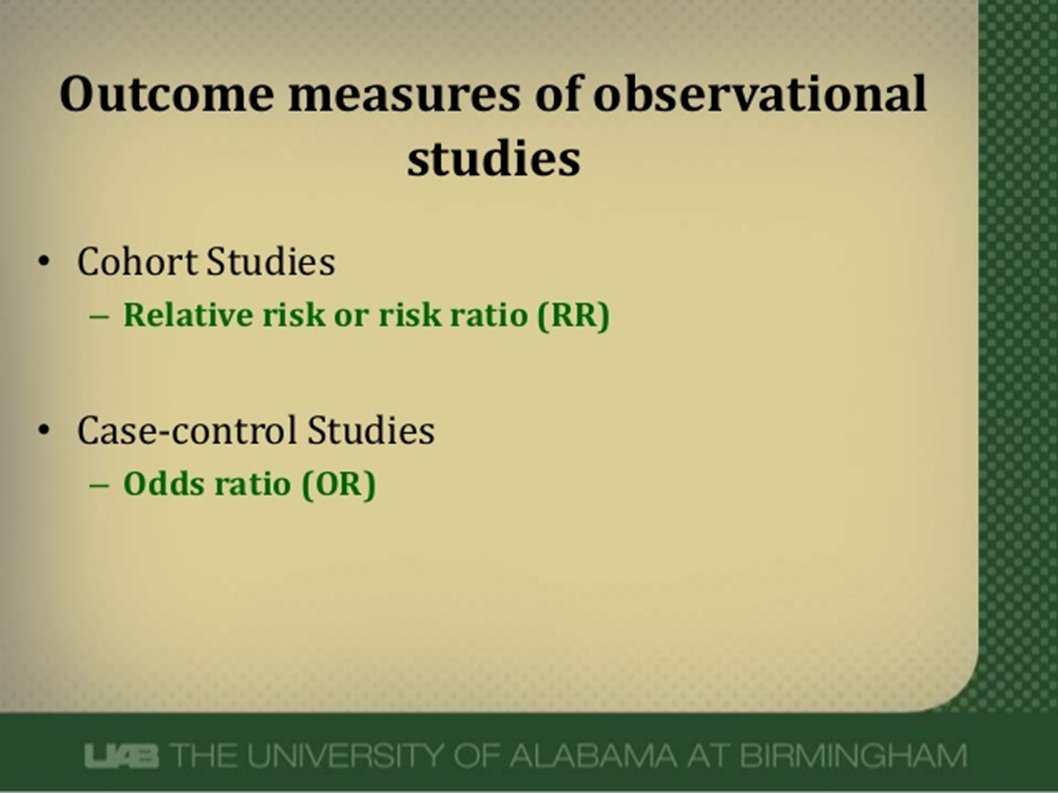


Abdullah Kharbosh What Does An Odds Ratio Or Relative Risk Mean By Ebmteacher Casecontrol Cohort T Co Shfiaepl57 عبر Slideshare



Neal D Goldstein Phd Mbi Unmatching A Matched Case Control Study



Solved A Prospoctive Cohort Study B Case Control Study Chegg Com


Case Control Study Odds Ratio Relative Risk Best Custom Academic Essay Writing Help Writing Services Uk Online Homeworknowcomlink Web Fc2 Com



Measures Of Association Ppt Download



Risk Differences And Rate Differences



Relative Risks And Odds Ratios What S The Difference Mdedge Family Medicine
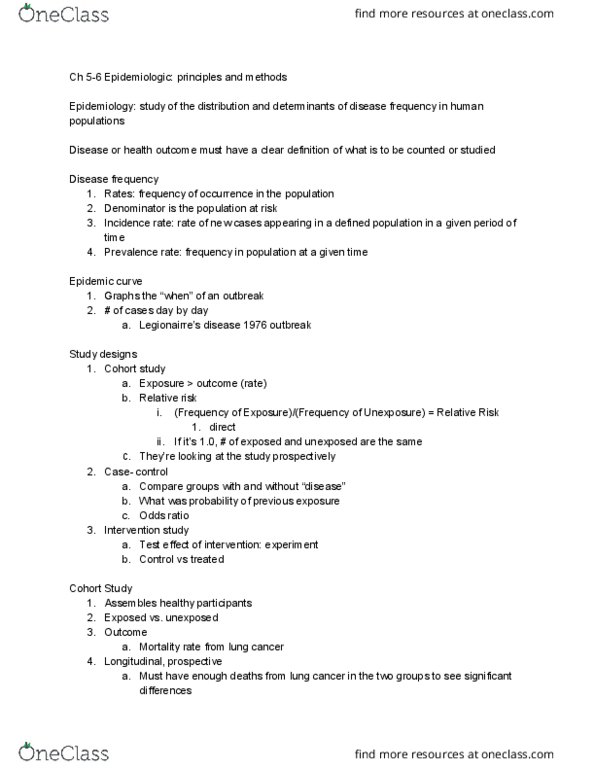


Phs 2101 Lecture Notes Summer 19 Lecture 4 Relative Risk Cohort Study Odds Ratio



Figure 2 From Secondhand Smoke Exposure And Risk Of Lung Cancer In Japan A Systematic Review And Meta Analysis Of Epidemiologic Studies Semantic Scholar
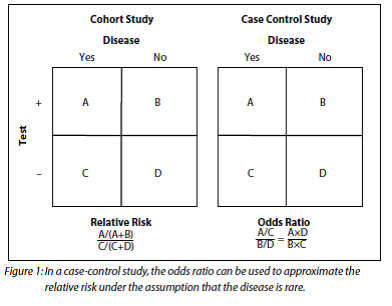


How To Be Awesome At Biostatistics And Literature Evaluation Part Ii Tl Dr Pharmacy



Society For Birth Defects Research And Prevention



Gordis 12 Biostatistics Risk Relative Risk Odds Ratio Flashcards Quizlet



Table 1 From The Relative Merits Of Risk Ratios And Odds Ratios Semantic Scholar



Measures Of Effect Relative Risks Odds Ratios Risk Difference And Number Needed To Treat Sciencedirect
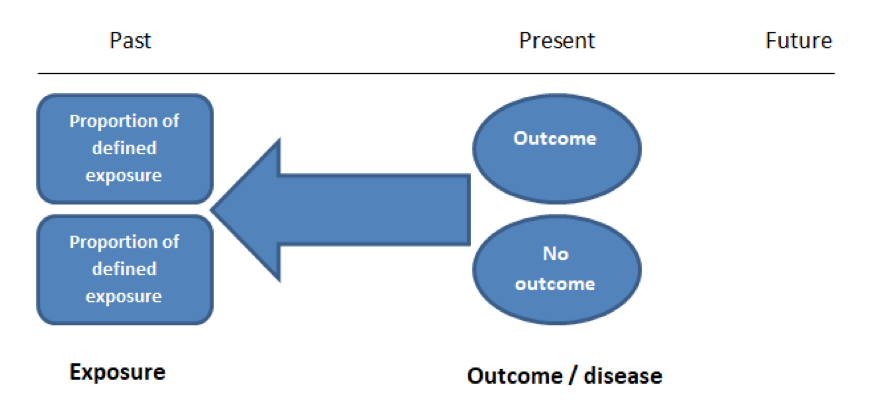


Case Control And Cohort Studies A Brief Overview Students 4 Best Evidence



A Practical Overview Of Case Control Studies In Clinical Practice Chest



1 Relative Risks Odds Ratios Or Hazard Ratios Of Risk Factors For Download Table


9 10 11 12 13 14 15 16 17 18 19 21 22 23 24 25 26 27 28 29 30 Review Odds Ratios Are Calculated From Case Control Studies Which Are Described On Slide 14 Odds Ratios Are Only Estimates Of Relative Risks Since True Incidence Rates Cannot Be
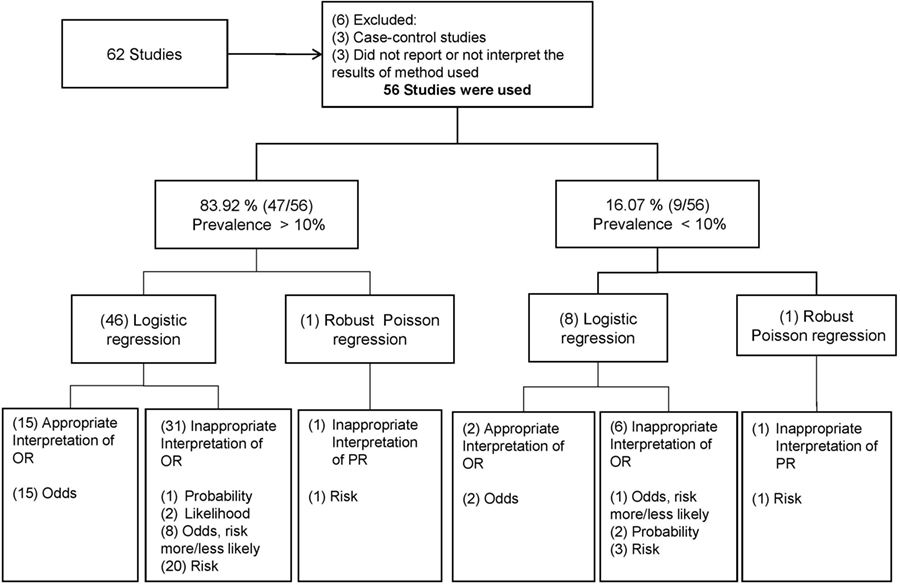


Frontiers Odds Ratio Or Prevalence Ratio An Overview Of Reported Statistical Methods And Appropriateness Of Interpretations In Cross Sectional Studies With Dichotomous Outcomes In Veterinary Medicine Veterinary Science



A Beginner S Guide To Interpreting Odds Ratios Confidence Intervals And P Values Students 4 Best Evidence



Research Techniques Made Simple Interpreting Measures Of Association In Clinical Research Sciencedirect



Estimating Risk



Image Result For Odds Ratio And Risk Ratio And Cohort Study And Case Study Cohort Study Case Study Study



1 The Odds Ratio Relative Odds In A Case Control Study We Do Not Know The Incidence In The Exposed Population Or The Incidence In The Nonexposed Population Ppt Download



Measures Of Association Blood Pressure Odds Ratio



Pdf When To Use The Odds Ratio Or The Relative Risk



The Difference Between Relative Risk And Odds Ratios The Analysis Factor
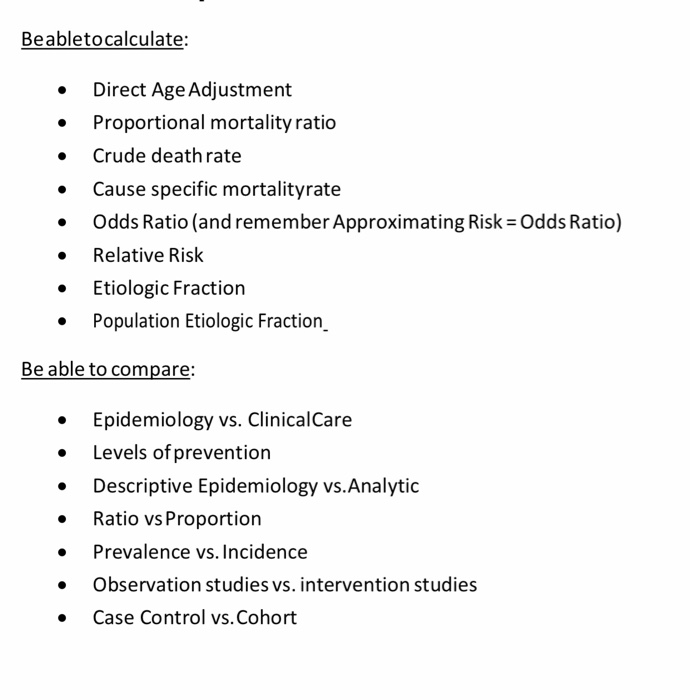


Beabletocalculate Direct Age Adjustment Proport Chegg Com



Case Control Studies
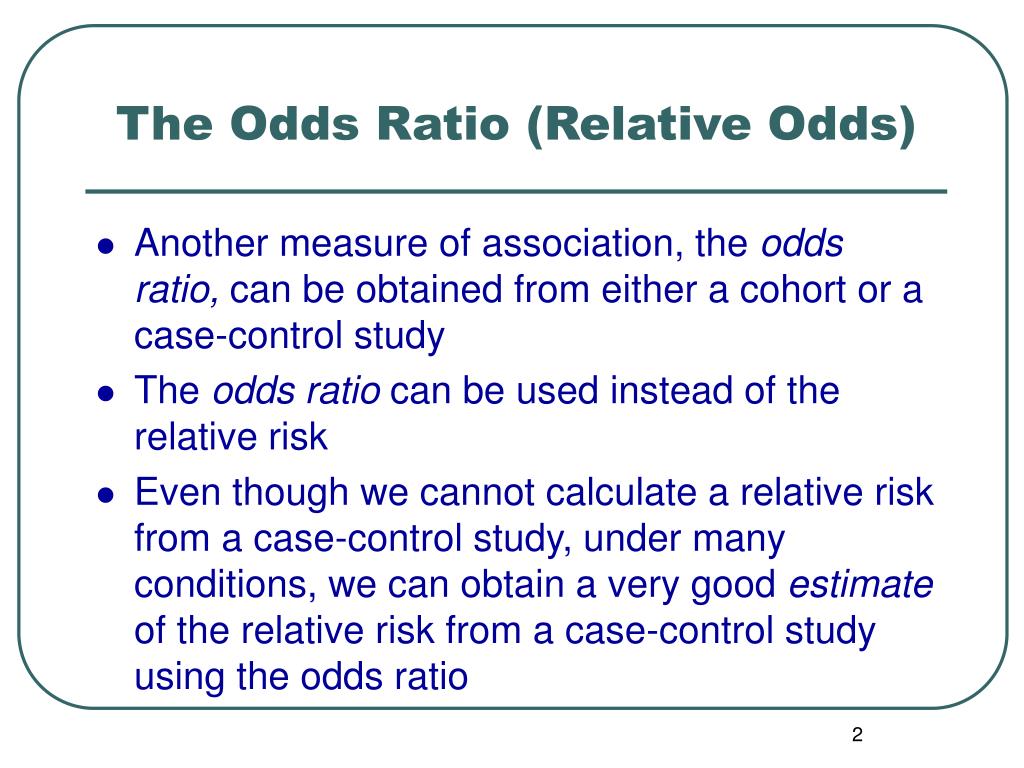


Ppt The Odds Ratio Relative Odds Powerpoint Presentation Free Download Id 6056



Converting An Odds Ratio To A Range Of Plausible Relative Risks For Better Communication Of Research Findings The Bmj



Calculate Relative Risk With 95 Confidence Intervals



Odds Ratios And Risk Ratios Youtube



Relative Risk And Odds Ratio Usmle The Journey



Questionable Utility Of The Relative Risk In Clinical Research A Call For Change To Practice Journal Of Clinical Epidemiology



Research Techniques Made Simple Interpreting Measures Of Association In Clinical Research Sciencedirect



A Beginner S Guide To Interpreting Odds Ratios Confidence Intervals And P Values Students 4 Best Evidence


Absolute Risk Vs Relative Risk Vs Odds Ratio Pp Made Easy In Population Perspective Made Easy On Vimeo


